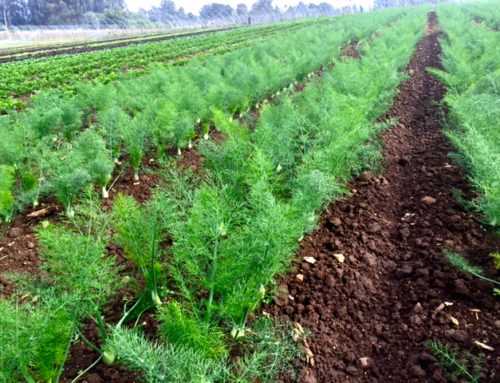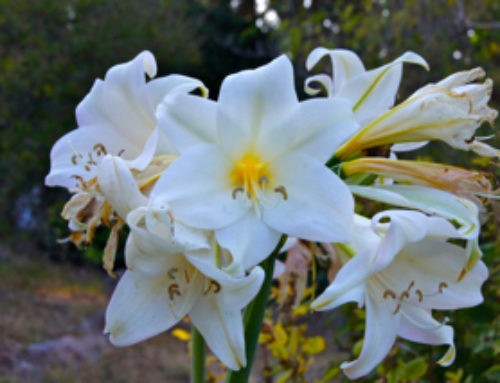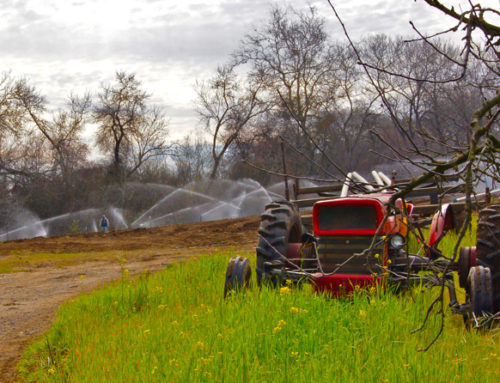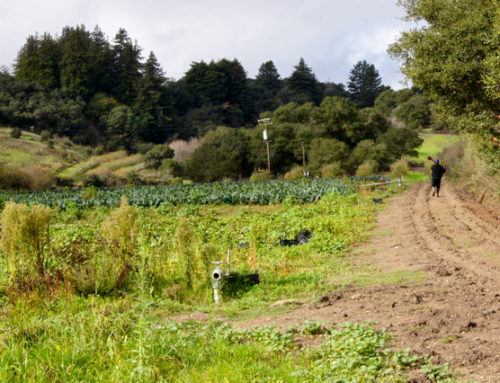Participating in the Farm’s CSA program and receiving a weekly share gives us the chance to experience the seasonal nature of the harvest over the course of the year. Participating from year to year provides an even broader perspective of how nature changes the harvest from one year to another.
Here’s a look at what 2013 was like (click on highlighted text to reach an associated post) –
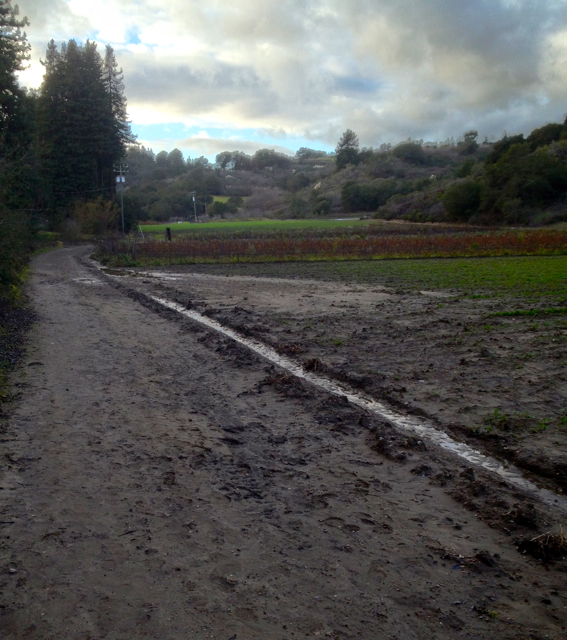
Unlike the lack of rain we are currently experiencing, last year began with storms which flooded part of our Lower Fields. By chance, the flooded area was in part of the fields planted mostly with cover crop.

Though there are apples from the previous Fall harvest in cold storage, January is the time when the trees themselves are dormant. This is when the trees were pruned in preparation for their next crop.
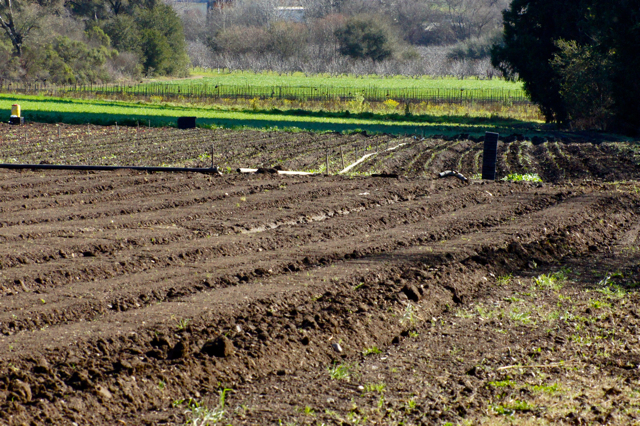
As the fields became dry enough, rows could be formed for new plantings. The green of cover crops just sprouting can be seen in the background, while the field in the mid-ground is full of transplants, and is pictured in other posts in July, August, and December.

Planted at the end of the previous year, cover crops go through their own progression. Pictured here are February cover crops in the Upper Fields. The mustard just beginning to bloom, while the rye and legumes have yet to reach full height.
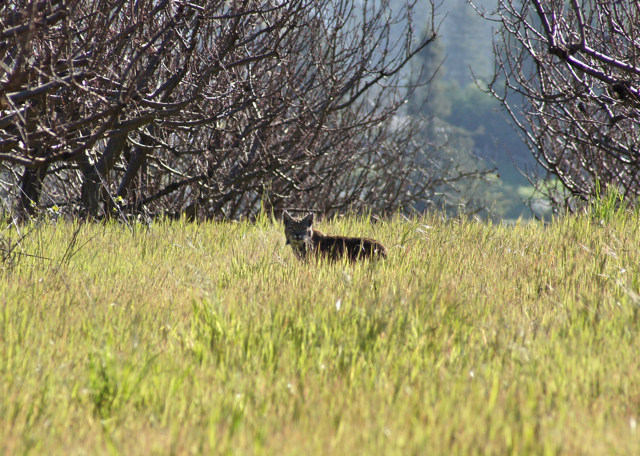
While cover crops are planted in the fields, the orchards have their own carpet of grasses in February which are just tall enough for a bobcat to hide in.
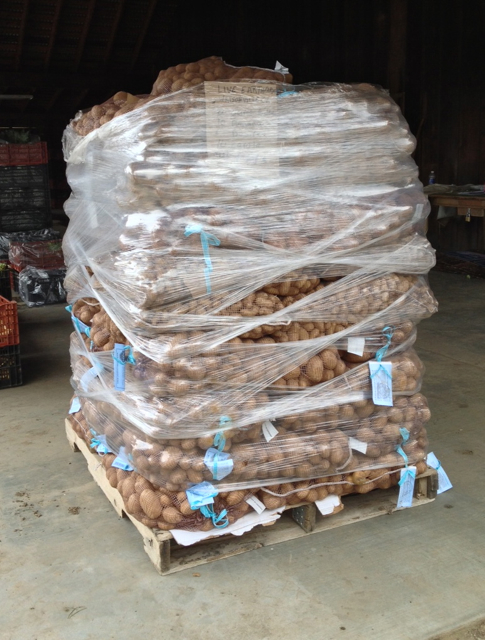
Preparations for crops that will be harvested during the upcoming Main Season are made in February. These seed potatoes arrived in mid-February.

Dormant since November, late February is when the apricot trees begin to bloom as well. Beginning as tiny buds, it only took a couple of weeks until the blossoms burst forth (below).

By mid-March the apricots were in full bloom. And they weren’t the only thing blooming on the Farm.
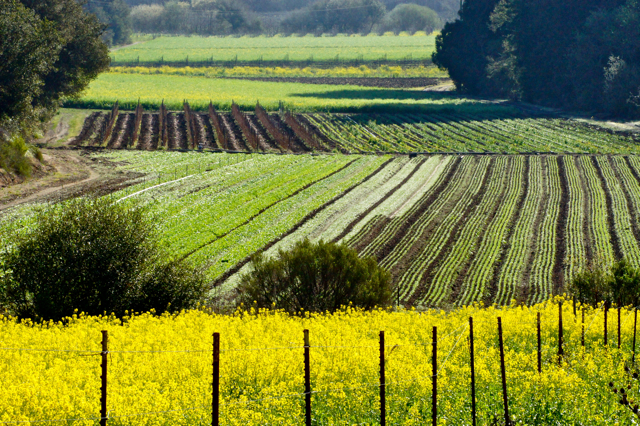
The fields themselves can change very rapidly. These are the Lower Fields in mid-March; the rows that were bare dirt in mid-February now covered in seedlings.

And here are the same fields less than three weeks later. Notice how much the crops grew with the returning sunlight and warmth as Spring arrived.

These are the same cover crops pictured above. It’s the end of March now, and you can see how the rye overtook the mustard. The cover crops stayed in the fields another couple of weeks. Long enough for Tom and Elisa to have some fun in them.
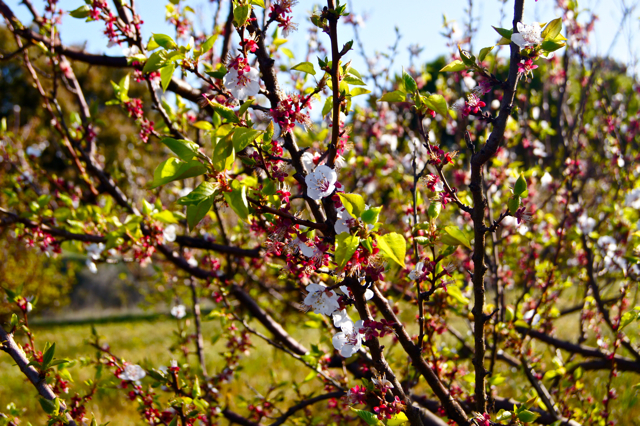
During the last half of March, the apricots went from bearing just blossoms to having a mix of blossoms and leaves.
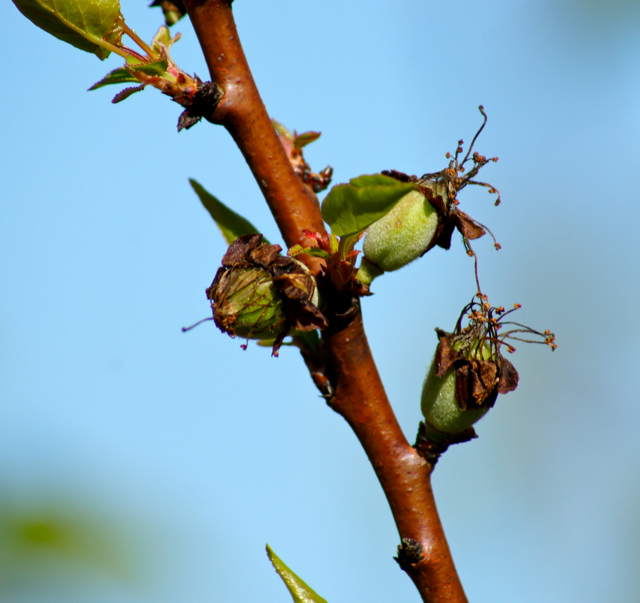
And by the end of March, small apricots were appearing. This is a critical time since the growing apricot has to shed the brown remains of the blossoms (called the jacket). Otherwise, the jacket can trap moisture and encourage a certain fungus to grow which damages the maturing apricot.
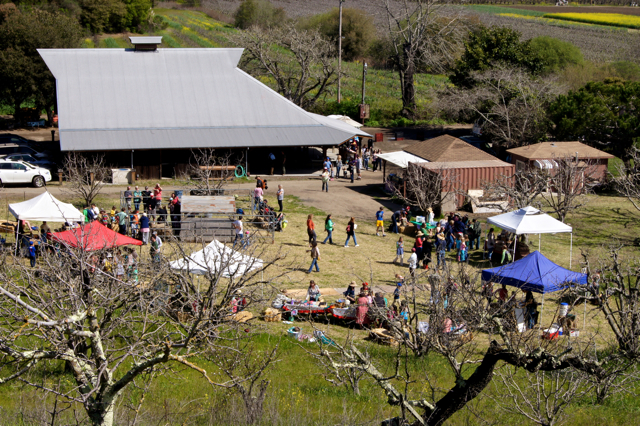
At the end of March we held our 4th Annual Sheep to Shawl event. The Lower Barn and surrounding area were prepped for throngs of people hoping to glimpse the sheep shearing, make some cool crafts, and eat some delicious food!

April is the beginning of Spring and our Main CSA Season. Green was the primary color as leaves burst forth on the trees.

As is typical, though, with our coastal weather, April began mostly foggy. The hens in one of our flocks were out and about enjoying the mild day. They had to be wary though …

… since the low fog kept a red-shouldered hawk roosting nearby, until the day cleared enough for it to look elsewhere for prey.
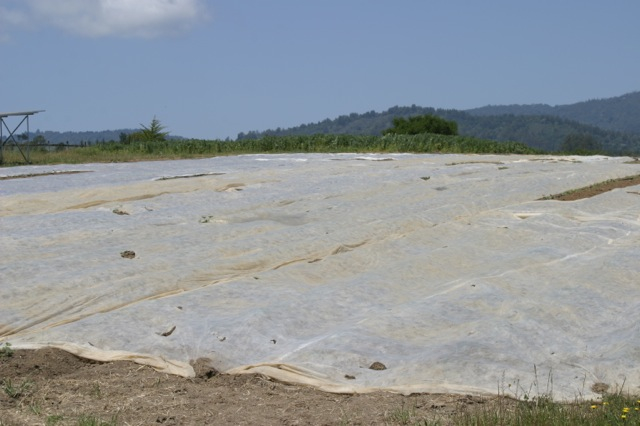
The end of April brought a touch of frost, and the need to cover recent dry-farmed tomato transplants and other vulnerable crops.
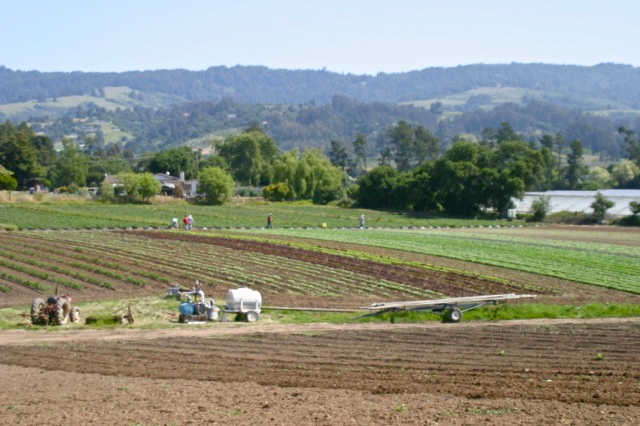
Though the year had begun wet, there hadn’t been much more rain and by May we were having to irrigate the fields and, unusually, many of the orchards. Pictured here is the main farm pump, and irrigation pipe ready to be placed in a recently planted field.
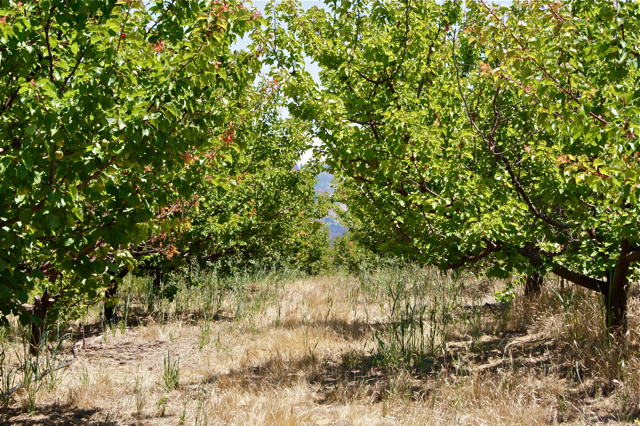
By the end of May the apricot leaves were looking hardier in preparation for summer. In contrast, the once green grass was already brown.

The apricots themselves were plumping up nicely. It was shaping up to be a bumper crop.

Meanwhile, along with many other things happening in the fields, it was time to thin the apples in order for the remaining ones to reach a large enough size. This bunch would be thinned down to two or three.
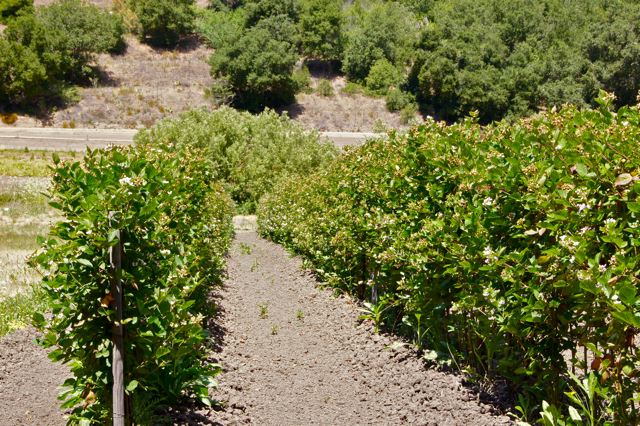
By the end of May, the blackberry vines were covered in blossoms.

Blackberry blossoms are a wonderful combination of white and pinkish purple. Looking almost tie-dyed.

June is the month when certain field crops, like crucifers, are tapering off and fruit, like the Santa Rosa plums pictured here, are ripening. It’s a transition time from Spring to Summer.
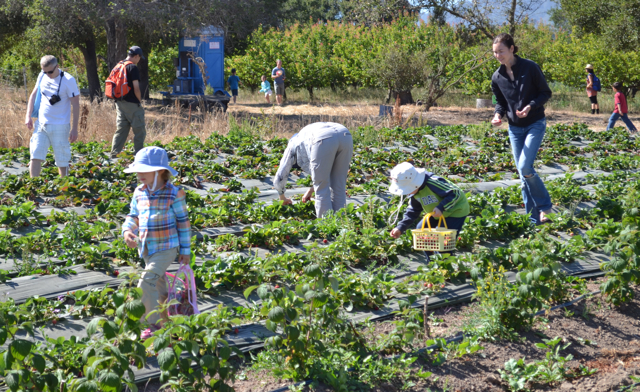
Our 18th annual Solstice Celebration was alive with joy and excitement. It was probably one of the best attended, and many visitors could be spotted harvesting strawberries from our Discovery Program garden prior to the evening potluck and bonfire.

The end of June was all about the Blenheim apricots. As we’d hoped, it was a bumper crop and we were able to hold a U-harvest day for CSA members to come and share in the bounty.

In July, the raspberry field in the middle-left of the picture looked very different from what it looked like in the pictures above from March. Leafy and green, the vines were now producing berries. More raspberry vines can be seen in the upper right corner.
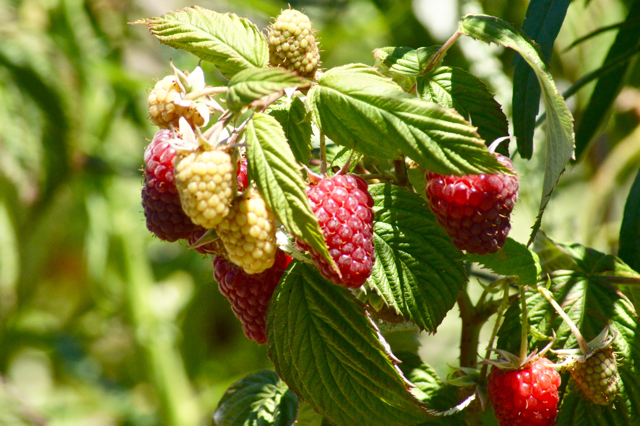
As much as farmers do their best to keep crop production consistent, every year still brings its own differences. While the raspberries were wonderful, due to unfavorable weather conditions there weren’t as many this past summer as there have been in previous ones.

It was an abundant summer for blackberries, though, which stepped in to fill the gap left by the smaller raspberry harvests.
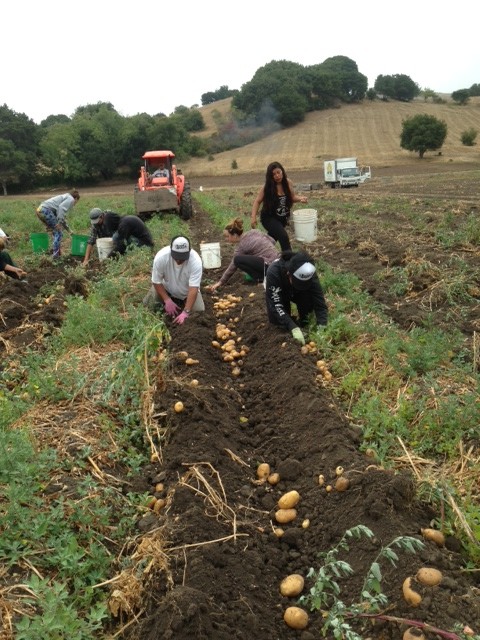
The Farm also serves as a classroom, and this past summer it hosted a teen program by Food,What?! The help could not have been more appreciated as the season approached its peak.
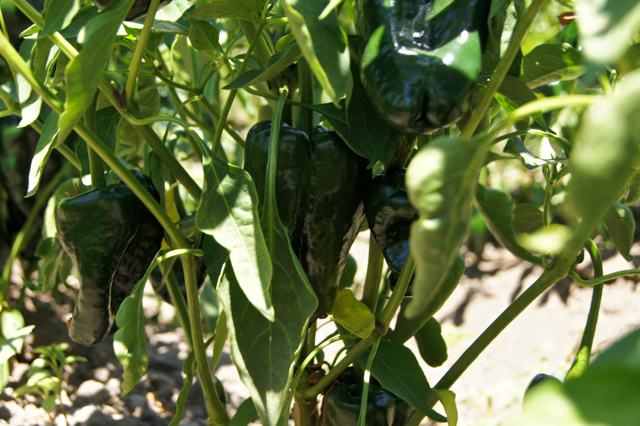
The end of July brought consistently warm days, and heat loving crops like these Poblano (often called, Pasilla) peppers sized up nicely. It was a very active time on the farm, with crop variety increasing almost daily.
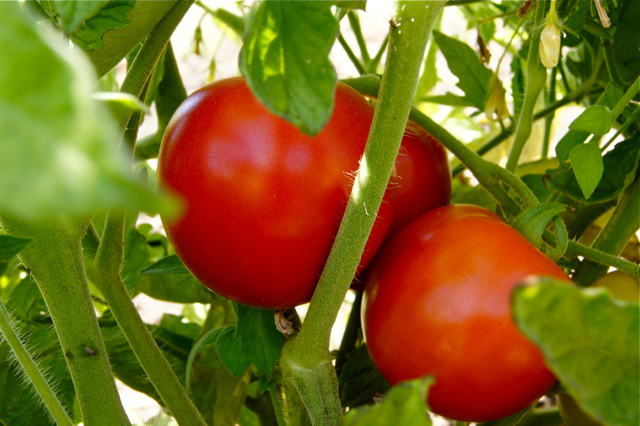
The first week of August brought a field visit from County Supervisor Kaputt, and it also brought the first dry-farmed tomatoes.

The summer squash field above was an abundant producer during August. The pickling cucumbers were in a nearby field.

While August crops were maturing in the fields, seedlings were being started in the greenhouse to stay on the planting schedule so there would be veggies to harvest in the upcoming months.
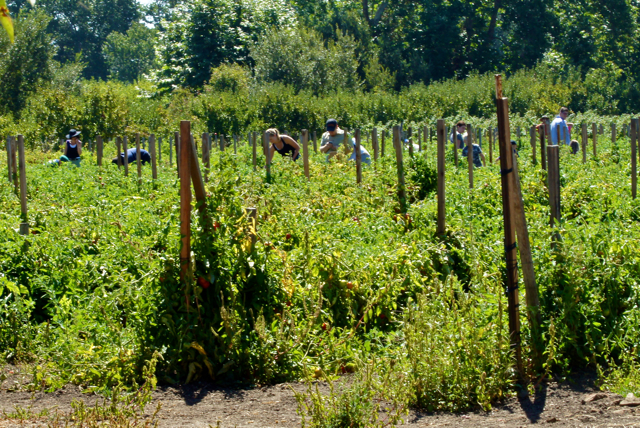
At the end of August, it was time to invite our community to the Farm for the summer’s first dry-farmed tomato u-harvest. We had a couple more scheduled u-harvest days, and the community field was open on Saturdays for harvesting all the way through October.
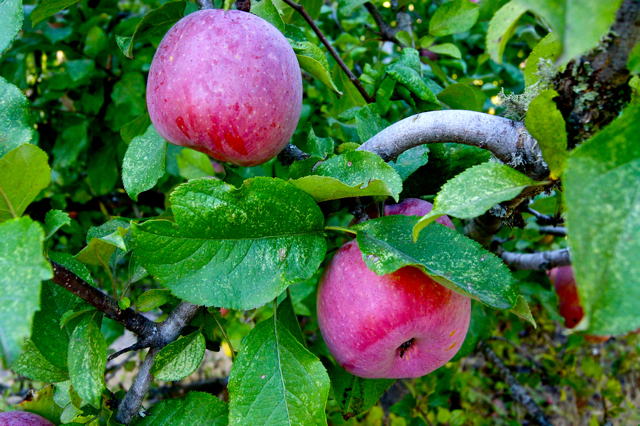
Tended to all year long, some apples were ready to harvest at the end of August while the majority of the apple varieties grown on the Farm, like these Fujis, were ready sometime during September and October.
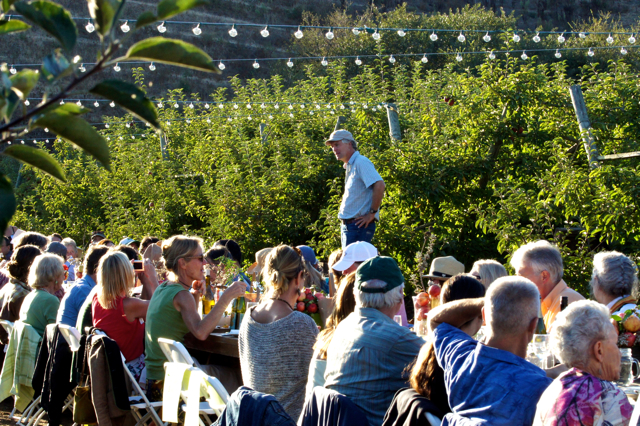
The Farm’s annual fundraiser for its Discovery Program was held in mid-September. The event, Slice, celebrated the apple harvest and was a great success, exceeding the year’s fundraising goal.

It rained a little, just before the Equinox. Not enough to make a difference in whether we needed to irrigate or not (we still did), yet it washed the dust off everything for the change of the season.

October was ushered in by the harvesting of our pumpkin patch, reminding us we needed to prepare for our Fall Harvest Festival at the end of the month.

Like June, October is another transition month. There was still a large variety of crops available or becoming ready, like this Romanesco cauliflower which creates a nest of leaves in which the head will mature.
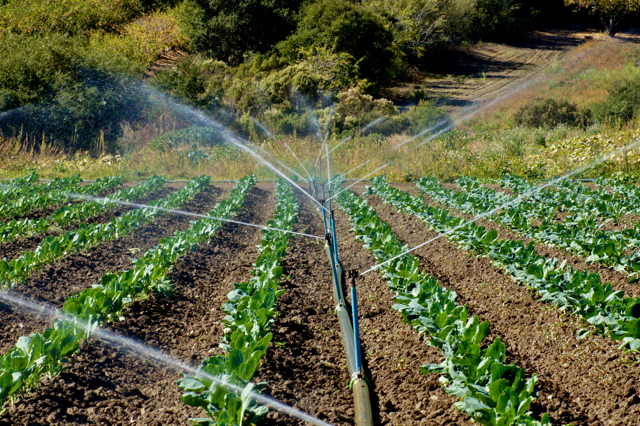
With no rain predicted in October, we were still irrigating fields like this one of Romanesco. This is the field that summer squash was growing in during August. Just beyond is the cucumber field, now covered in weeds and waiting to be plowed and planted with lettuce seedlings.
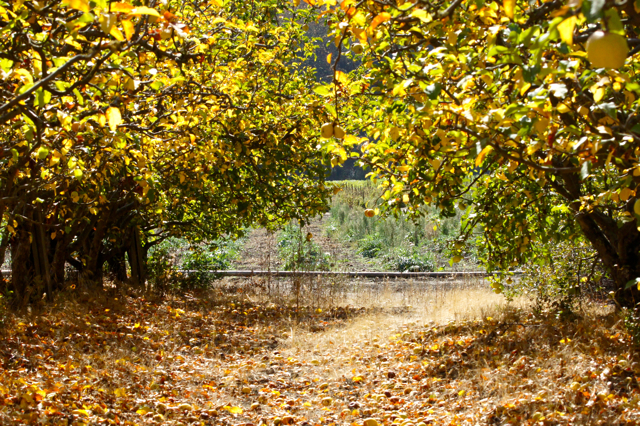
The angle of sunlight increases after the Equinox, and it takes on a golden tinge that triggers a response in the leaves of trees like these apples, causing them to yellow and fall.
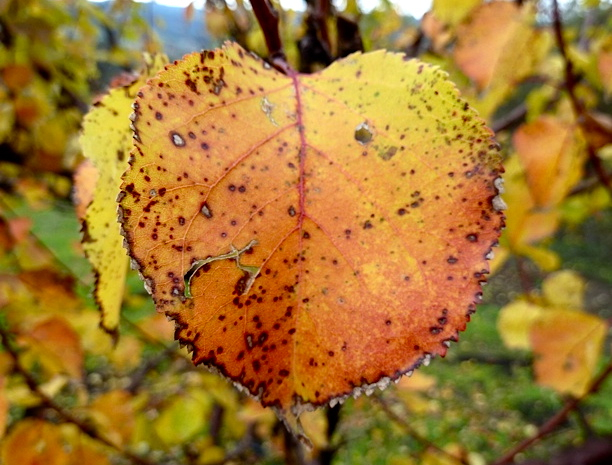
The Farm’s Main CSA Season ended in mid-November. Plant growth was slowing as colder days arrived with the approach of winter, and the fruit trees entered their period of dormancy. We began now to look to the beginning of our Winter Season at the end of the month, and further ahead to our next Main Season.
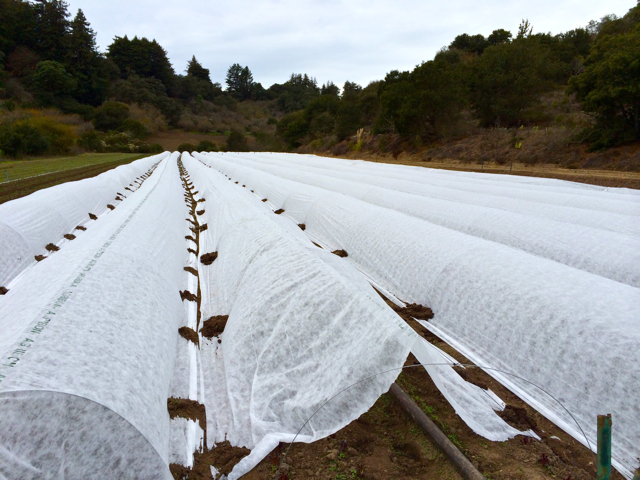
Reminiscent of the end of April, frost was predicted at the beginning of December. Once again, delicate crops like the lettuce in the field above were covered to protect them from frost damage.
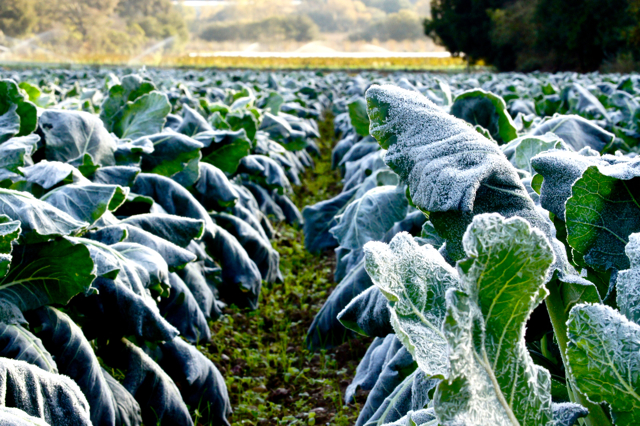
April’s frost was light and quick. December’s was heavy and occurred on a number of nights in a row. This is the field of Romanesco that was being irrigated in October. With growth slowed, the heads may not be ready to harvest until late January or early February.
This has been just one year in the life of Live Earth Farm. We want to thank all those who have participated in our Community Supported Agriculture program over the past 18 years. The Farm would not exist without the support of its community. As the Farm begins its 19th growing season, all of us here are dedicated to continuing to provide our community with the best organic produce possible, and to maintain the connection made between you and the source of your food.
[button link=”http://liveearthfarm.net/?p=47373″]About our CSA Program[/button]


